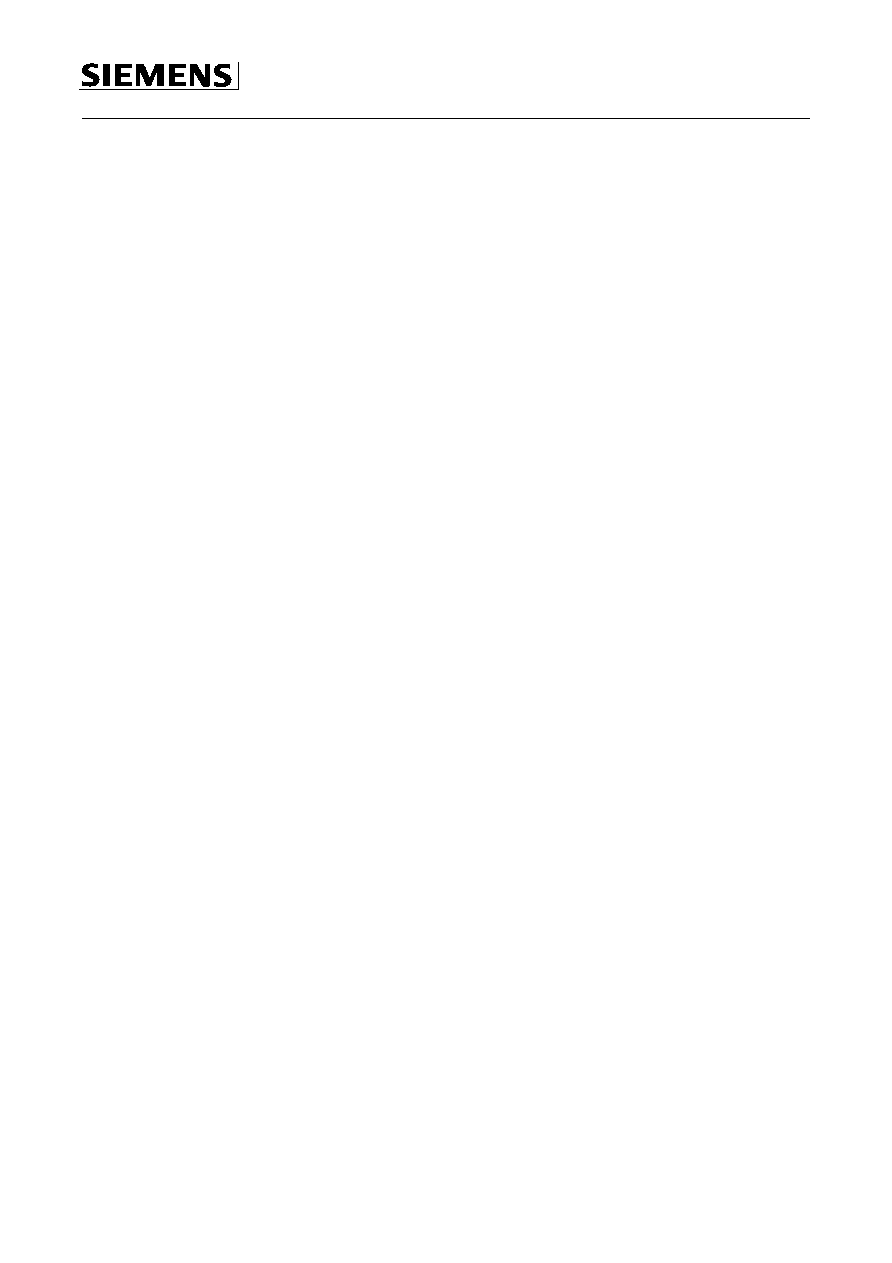- 您現(xiàn)在的位置:買賣IC網(wǎng) > PDF目錄98304 > TUA6012XS (INFINEON TECHNOLOGIES AG) 2-BAND, VIDEO TUNER, PDSO28 PDF資料下載
參數(shù)資料
| 型號: | TUA6012XS |
| 廠商: | INFINEON TECHNOLOGIES AG |
| 元件分類: | 調(diào)諧器 |
| 英文描述: | 2-BAND, VIDEO TUNER, PDSO28 |
| 封裝: | 1 MM HEIGHT, PLASTIC, TSSOP-28 |
| 文件頁數(shù): | 4/31頁 |
| 文件大小: | 420K |
| 代理商: | TUA6012XS |
第1頁第2頁第3頁當(dāng)前第4頁第5頁第6頁第7頁第8頁第9頁第10頁第11頁第12頁第13頁第14頁第15頁第16頁第17頁第18頁第19頁第20頁第21頁第22頁第23頁第24頁第25頁第26頁第27頁第28頁第29頁第30頁第31頁

TUA 6012
TUA 6014
Semiconductor Group
12
1998-09-01
The software-switched ports P0, P1, P2 and P3 are general-purpose open-collector
outputs. The test bit T1 = 1, switches the test signals
f
ref (4 MHz / reference divider ratio)
and
C
y (divided input signal) to P0 and P1 respectively. P0, P1 are bidirectional.
The lock detector resets the lock flag FL when the width of the charge pump current
pulses is greater than the period of the crystal oscillator (i.e. 250 ns). Hence, when
FL = 1, the maximum deviation of the input frequency from the programmed frequency
is given by
f = ±I
P (KVCO / fQ) (C1 + C2) / (C1C2)
where
I
P is the charge pump current, KVCO the VCO gain, fQ the crystal oscillator
frequency and
C
page 27). As the charge pump pulses at 62.5 kHz (=
f
ref), it takes a maximum of 16 s
for FL to be reset after the loop has lost lock state.
Once FL has been reset, it is set only if the charge pump pulse width is less than 250 ns
for eight consecutive
f
ref periods. Therefore it takes between 128 and 144 s for FL to be
set after the loop regains lock.
2.3
I2C-Bus Interface
Data is exchanged between the processor and the PLL via the
I
2C Bus. The clock is
generated by the processor (input SCL), while pin SDA functions as an input or output
depending on the direction of the data (open collector, external pull-up resistor). Both
inputs have hysteresis and a low-pass characteristic, which enhance the noise immunity
of the
I
2C Bus.
The data from the processor pass through an
I
2C-Bus controller. Depending on their
function the data are subsequently stored in registers. If the bus is free, both lines will be
in the marking state (SDA, SCL are HIGH). Each telegram begins with the start condition
and ends with the stop condition. Start condition: SDA goes LOW, while SCL remains
HIGH. Stop condition: SDA goes HIGH while SCL remains HIGH. All further information
transfer takes place during SCL = LOW, and the data is forwarded to the control logic on
the positive clock edge.
The table ”Bit Allocation” (see ”Bit Allocation Read/Write” on page 13) should be referred
to the following description. All telegrams are transmitted byte-by-byte, followed by a
ninth clock pulse, during which the control logic returns the SDA line to LOW
(acknowledge condition). The first byte is comprised of seven address bits. These are
used by the processor to select the PLL from several peripheral components (chip
select). The LSB bit (R/W) determines whether data are written into (R/W = 0) or read
from (R/W = 1) the PLL.
In the data portion of the telegram during a WRITE operation, the MSB bit of the first or
third data byte determines whether a divider ratio or control information is to follow. In
相關(guān)PDF資料 |
PDF描述 |
|---|---|
| TUA6020 | 2-BAND, VIDEO TUNER, PDSO28 |
| TUA6022-K | 2-BAND, VIDEO TUNER, PDSO28 |
| TUA6022-S | 2-BAND, VIDEO TUNER, PDSO28 |
| TUA6022XS | 2-BAND, VIDEO TUNER, PDSO28 |
| TUA6024-K | 2-BAND, VIDEO TUNER, PDSO28 |
相關(guān)代理商/技術(shù)參數(shù) |
參數(shù)描述 |
|---|---|
| TUA6014-K | 制造商:INFINEON 制造商全稱:Infineon Technologies AG 功能描述:Components for Entertainment Electronics |
| TUA6014-S | 制造商:INFINEON 制造商全稱:Infineon Technologies AG 功能描述:Components for Entertainment Electronics |
| TUA6014XS | 制造商:INFINEON 制造商全稱:Infineon Technologies AG 功能描述:Components for Entertainment Electronics |
| TUA6020 | 制造商:INFINEON 制造商全稱:Infineon Technologies AG 功能描述:2 Band TV Tuner Mixer-Oscillator-PLL with balanced IF-Amplifier |
| TUA6020XT | 制造商:Infineon Technologies AG 功能描述:TV Tuner Mixer-Oscillator-PLL with balanced IF-Amplifier 28-Pin TSSOP |
發(fā)布緊急采購,3分鐘左右您將得到回復(fù)。